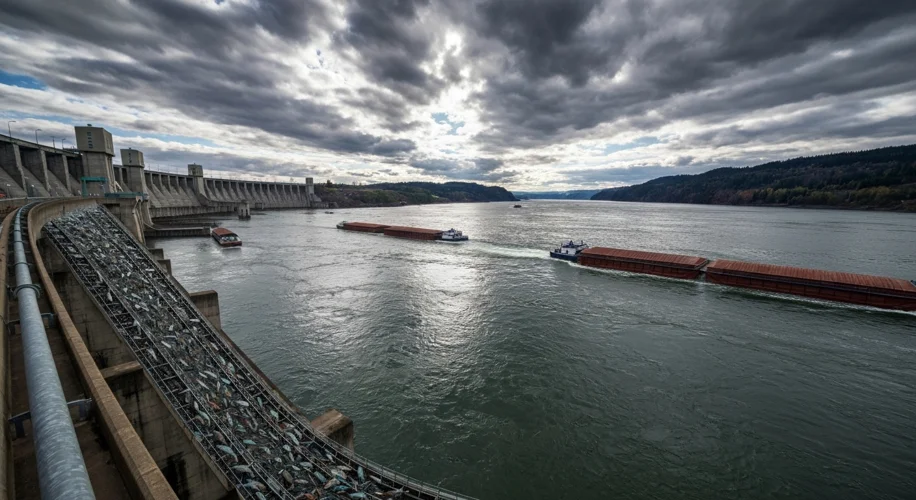The roar of the Columbia River, a titan carving its path through the rugged landscapes of the Pacific Northwest, has long been a symbol of power and potential. For centuries, its waters teemed with salmon, anadromous warriors undertaking epic migrations from the vast Pacific Ocean to the ancestral spawning grounds in the tributaries. These magnificent creatures were not merely wildlife; they were the lifeblood of indigenous cultures, a crucial food source, and an integral part of the region’s ecological and economic identity. Yet, by the mid-20th century, the salmon’s journey was becoming a perilous, often fatal, odyssey.
The story of the Pacific Northwest dams is a complex tapestry woven with threads of progress, ambition, and unintended consequences. At its heart lies a critical question: how did the engineers and politicians of the era, armed with burgeoning scientific knowledge and the promise of abundant electricity, reconcile their vision for development with the undeniable impact on the salmon?
As the United States expanded westward, harnessing the power of its rivers became a national imperative. The Columbia River, with its immense flow, presented an irresistible opportunity. The desire for cheap, reliable electricity to fuel burgeoning industries and growing cities was paramount. Dams like the Grand Coulee and the Bonneville Dam were heralded as marvels of modern engineering, symbols of American ingenuity and might. They promised to irrigate arid lands, facilitate navigation, and, most significantly, provide a seemingly inexhaustible source of hydroelectric power.
Engineers, steeped in the principles of hydraulics and structural integrity, were the architects of this transformation. Their primary focus was on the technical challenges of dam construction and power generation. The sophisticated calculations involved in managing water flow, generating electricity, and creating vast reservoirs often overshadowed the intricate biological needs of the salmon. While the concept of fish ladders and other passage systems was introduced, the efficacy of these solutions in the face of massive, impassable concrete barriers was a subject of debate even then.
Consider the prevailing attitudes. Many engineers, while perhaps aware of the potential disruption, viewed the salmon as a secondary concern, an acceptable cost for achieving greater societal benefits. The prevailing scientific understanding of salmon life cycles and the specific challenges they faced at each stage of their migration was still developing. Furthermore, the sheer scale of the engineering projects often meant that detailed ecological impact assessments, as we understand them today, were either rudimentary or non-existent.
Politicians, eager to deliver on promises of economic growth and modernization, often championed these projects with unbridled enthusiasm. The narrative of progress was a powerful one, and the economic benefits of dams – jobs, industry, electricity – were tangible and immediate. While some may have harbored genuine concerns about the salmon, their voices were often drowned out by the clamor for development. The immediate, visible benefits of the dams tended to outweigh the less quantifiable, long-term ecological costs. The political calculus often favored the immediate economic gains over the preservation of a species, particularly when the full extent of the damage was not yet fully understood or widely publicized.

The construction of the dams, beginning in earnest in the 1930s, began to tell a different story. The once-free passage of salmon was abruptly halted. While fish ladders were designed to allow adult salmon to ascend the dam, their effectiveness varied greatly, and they often proved insufficient. For the juvenile salmon, or smolts, making their perilous journey downstream, the turbines of the dams presented a deadly gauntlet. Many were injured or killed as they passed through the massive machinery. The reservoirs created behind the dams also altered the river’s temperature, flow, and sediment composition, creating less hospitable environments for salmon eggs and young fish.
The consequences were stark and undeniable. Salmon populations plummeted. Traditional fishing grounds, vital to both commercial and subsistence economies, dwindled. Indigenous communities, whose cultural and spiritual practices were deeply intertwined with the salmon runs, faced profound disruption and loss.
The narrative of progress began to fray at the edges. As the ecological toll became more apparent, a counter-movement emerged. Scientists, conservationists, and concerned citizens began to advocate for the salmon, demanding action. The decades that followed saw a protracted struggle to mitigate the damage, involving the construction of more sophisticated fish passage systems, efforts to restore habitat, and even the controversial practice of barging smolts past the dams.
This history serves as a potent reminder of the complex interplay between human ambition, technological advancement, and environmental stewardship. The decisions made in the mid-20th century, driven by a particular vision of progress, had profound and lasting impacts on the iconic salmon of the Pacific Northwest. It underscores the critical importance of considering the full spectrum of consequences – both immediate and long-term, tangible and ecological – when embarking on large-scale development projects. The story of the dams and the salmon is not just a regional tale; it is a cautionary epic about the delicate balance between human civilization and the natural world, a balance that requires foresight, humility, and a deep respect for the intricate web of life.

